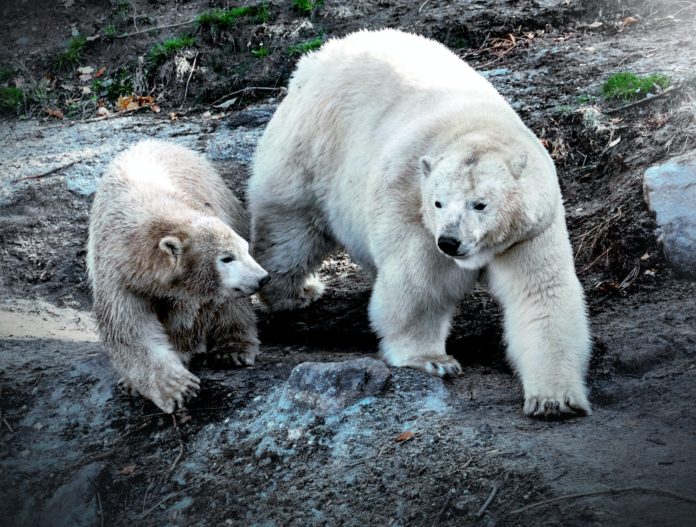Climate change has forced polar bears to adapt to new food sources in recent years, and according to a recent study, human food — and garbage — may be next on the menu. But ingesting human-made products can be incredibly dangerous for animals, leading to problems for humans and polar bears alike.
The study included contributions from Andrew Derocher, a Professor of Biology at the University of Alberta, as well as researchers from Trent University and Environment and Climate Change Canada. It was published in Oryx.
Climate change is causing major problems for polar bears
Over the past few years, climate change has put polar bears at increasingly greater risk of extinction. Warming Arctic conditions have led to shrinking sea ice levels, which impacts everything from mating to eating.
At the same time, human activity is becoming more and more prominent in the Arctic. This not only disturbs Arctic animals’ habitats, but also introduces new food sources into the Arctic environment.
The team behind the study was interested in learning how these changes are affecting polar bears, and whether there are ways we can help. Polar bears are currently classified as vulnerable by the International Union for Conservation of Nature, which means they’re at a high risk of becoming endangered and eventually going extinct.
Arctic observations reveal dangers of human food, waste
To learn more, the scientists combined individual case studies from Canada, Alaska, Russia, and Norway. Each case study included observations of polar bear communities.
Taken together, the case studies revealed a number of trends that have emerged in recent years as a result of both climate change and increased bear-human interactions.
Decreasing sea ice levels, for example, have forced polar bears to spend more and more time on the mainland. This in turn increases the chances of bears encountering and interacting with people.
Increasing human activity in the Arctic also means that polar bears have easier access to both human food sources and human garbage. Since polar bears are losing many traditional food sources as a result of climate change, both human food and human garbage are particularly attractive sources of nourishment. Yet because they’re typically situated in areas with high human activity, they can become hotspots for human-bear conflicts.
The authors also found that human food and garbage can be detrimental to polar bears’ health. In particular, human-made products may contain plastics and toxins that can lead to serious health issues for polar bears.
What’s more, if food waste is mixed in with other garbage, the bears may end up eating plastics, metals, woods, and other materials which were never meant for consumption.
How can we help?
With climate change continuing to push polar bears further inland, the authors urge that food and waste management solutions become a priority in the Arctic. This could mean securing all food and garbage in bear-proof containers, or regularly monitoring landfills.
“Securing food waste in polar bear country is one thing we can do right now to make a positive difference for both polar bears and humans,” said Tom Smith, Professor of Wildlife Sciences at Brigham Young University and lead author of the study, in a press release.
“[Our] report shows the great opportunity we have to protect the polar bears we do have, and get ahead of an issue we expect to worsen due to climate change.”








































